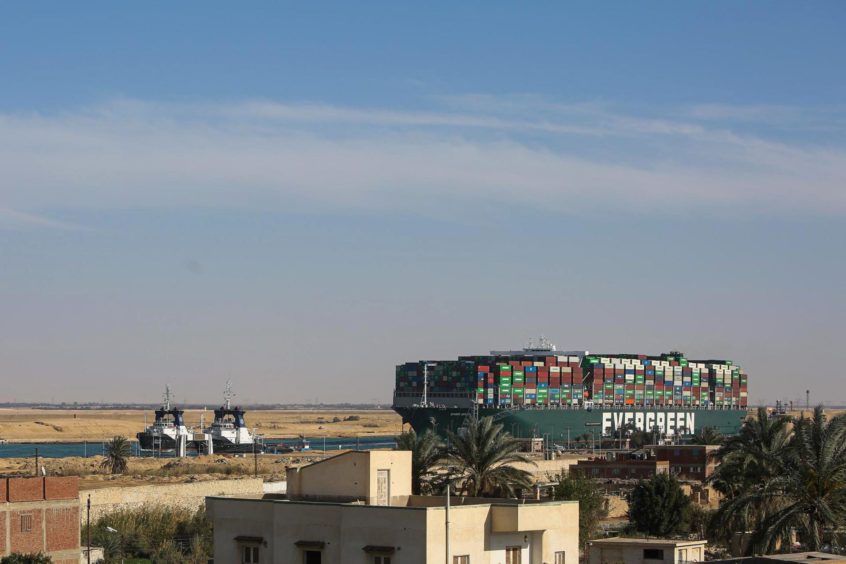
The giant vessel that’s blocked the Suez Canal for almost a week was pulled free from the bank, a major step toward getting ships moving again along one of the world’s most important trade arteries.
The stoppage caused a tailback of hundreds of vessels, snarled supply chains already under pressure due to the coronavirus pandemic and provided a stark reminder of the fragility of the global trade infrastructure.
Horns sounded in celebration as the Ever Given — a boat longer than the Eiffel Tower — made her way up the canal after a frantic rescue operation involving teams of tugs and dredgers working day and night.
Tug boats pull the Ever Given container ship along the Suez Canal after being freed from the canal bank in Suez, Egypt, on Monday, March 29, 2021.
The container ship was moved from the canal wall around 3 p.m. Egypt time on Monday. It then traveled north from the narrow southern end of the canal, where it ran aground on Tuesday, toward the Great Bitter Lake, arriving three hours later.
The Suez Canal Authority said navigation would resume as normal, though it didn’t specify when. There will be enough space for other ships to pass the Ever Given now it’s in the lake.
It could take around a week to clear the queue of ships waiting around the canal, according to the SCA.
Tense Minutes
Salvage teams had struggled to free the vessel, 400 meters long and carrying almost $1 billion of cargo. They tried to use high tides and a full moon to pull it from the bank it smashed into during a sandstorm. The operation involved shoveling 30,000 cubic meters of sand and removing part of the canal wall.
Part of the problem was a five-day wait for two large tugboats, according to Peter Berdowski, chief executive officer of Boskalis Westminster, the parent company of the salvage team.
“We were enormously helped by the strong tide, the forces of nature that push hard, even harder than the two tugboats can pull,” he told Dutch radio. “The men were euphoric of course. But there was a tense moment when this giant was floating freely. You need to bring it under control quickly with the tugboats before it gets stuck on the other side, we would have gone from bad to worse. Those were a tense 10 minutes.”
Egyptian authorities were desperate to get traffic flowing again through the waterway that’s a conduit for about 12% of world trade and about 1 million barrels of oil a day. This has been the canal’s longest closure since it was shut for eight years following the 1967 Six Day War.
Firms including A.P. Moller-Maersk A/S and Hapag-Lloyd AG were forced to reroute their ships via the southern tip of Africa, which can add two weeks on to a journey between Europe and Asia.
Dominoes Have Toppled
The long-term impact of the canal’s $10-billion-per-day closure will likely be small given that global merchandise trade amounts to $18 trillion a year. Yet so many ships being thrown off schedule will ensure cargo delays for weeks, if not months. The dozen or so container carriers that control most of the world’s ocean freight are already charging record-high rates on some routes, and shortages of everything from chemicals and lumber to dockside labor already abound.
“The dominoes have been toppled,” Lars Jensen, chief executive of SeaIntelligence Consulting in Copenhagen, wrote on social media over the weekend. “The delays and re-routing which have already happened will cause ripple effects” which will be felt for several months.
Companies from Ikea to Caterpillar Inc. have been affected and tens of thousands of live animals — many of them sheep — are stuck on ships in the area. Consumer goods, industrial inputs, and commodities from oil to coffee are caught up in the jam, with Asian exporters and European importers affected most directly.
The blockage held up about $400 million an hour, based on rough calculations from Lloyd’s List that suggested westbound traffic to Europe is worth around $5.1 billion a day and eastbound traffic is approximately $4.5 billion.
Recommended for you
